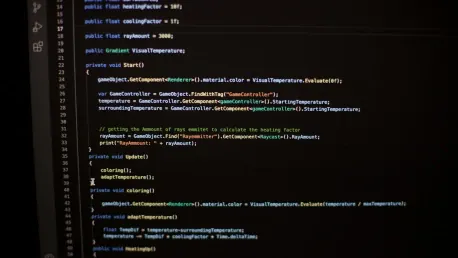The AI research community has recently introduced a groundbreaking benchmark called the Kolmogorov-Test (KT) to evaluate the capability of code-generating language models in compressing data sequences. This novel benchmark is specifically designed to assess how well these models can generate minimal programs to reproduce given sequences, a concept closely associated with Kolmogorov complexity theory. The KT seeks to shift the narrative around AI model performance, moving the focus from mere text prediction to the more complex task of programmatic sequence reproduction.
The Quest for Optimal Data Compression
Data compression is a critical component of computational intelligence, not just in terms of identifying repetition but in discovering structured patterns through concise programmatic representation. The Kolmogorov framework places significant emphasis on achieving optimal compression by uncovering these patterns, despite the inherent challenge of its uncomputability. This has been a subject of significant interest, particularly with the rise of large language models adept at code generation, which present a novel opportunity to approximate this theoretical ideal through code synthesis.
However, mastering this form of compression involves much more than simply compressing redundant information. It calls for a deep understanding and recognition of the underlying patterns in the data, allowing for the creation of minimal programs that can accurately reproduce the original sequences. This theoretical approach posits an ideal method of compression that balances efficiency with precision, steering towards optimal representations of complex data forms.
Challenges in Current AI Models
Despite their advancements, current AI models still face significant challenges in compressing data sequences into succinct, executable codes. These limitations are particularly pronounced when dealing with complex real-world data such as audio, text, or DNA sequences. Existing models frequently struggle to generate programs that accurately reproduce these sequences, indicating a considerable gap in their genuine pattern recognition abilities and their proficiency in translating intricate logical constructs into minimalistic instructions.
This shortfall largely stems from the models’ tendency to replicate input sequences verbatim rather than identifying and encoding the underlying logical patterns. This approach not only inflates the length of the generated code but also undermines the essence of compression. These limitations are highlighted when the models are faced with unseen or complex sequences, revealing their struggles to generalize beyond the data they were trained on. This indicates that while the technology has made strides, significant gaps remain in achieving true pattern-based compression.
Contrasting Traditional and Modern Compression Tools
Traditional algorithms such as GZIP have long been used for data compression by efficiently encoding statistical regularities, particularly in lengthy or repetitive sequences. These methods offer a reliable baseline against which newer technologies can be compared. However, modern neural compression systems have introduced a new paradigm by integrating language modeling with arithmetic coding. These systems rely on prediction probabilities to compress input data, a method that offers significant promise but also comes with notable downsides.
One of the primary limitations of these modern systems is their requirement for access to complete model weights during decoding. This necessity can significantly hinder their practicality, especially in scenarios requiring real-time processing or resource-constrained environments. Additionally, modern prompted code-generating models like GPT-4 and LLaMA have shown promise in zero-shot settings for generating Python programs capable of reproducing sequences. Yet, these models often produce overly verbose and imprecise code, especially when dealing with new or complex sequences. This underlines the persistent challenge of achieving concise and accurate data compression through programmatic means.
Evaluating Performance with Synthetic and Real-World Data
In an effort to benchmark the reasoning abilities of code-generating language models better, researchers from Meta AI and Tel Aviv University introduced the Kolmogorov-Test (KT) with sequences sourced from both natural and synthetic data. To facilitate comprehensive training and evaluation, a custom-designed domain-specific language (DSL) was utilized. This approach enabled the generation of extensive synthetic program-sequence pairs, forming the foundation for evaluating model performance.
The researchers developed an automated framework capable of generating millions of these synthetic pairs, providing a robust training ground for models like SEQCODER. These models were then evaluated against metrics such as accuracy—based on whether the generated program could reproduce the sequence—and precision—how concise the generated program was compared to traditional compression algorithms like GZIP. Although sophisticated models achieved remarkable accuracy on synthetic data, their performance on real-world data lagged significantly. This discrepancy highlights the profound challenge of translating success from controlled environments to the more variable, noisy datasets encountered in practical applications.
Bridging the Gap Between Synthetic and Real Data
The Kolmogorov-Test has revealed a significant gap between AI models’ performance on synthetic benchmarks and their effectiveness with real-world data. These findings underscore the complexity involved in achieving effective compression through code generation and highlight the limitations of current training methodologies. The challenge lies in bridging the theoretical constructs practiced on synthetic data with the unpredictable variability of real-world sequences.
Addressing this gap necessitates innovative approaches that unify reasoning and data compression. This involves developing comprehensive training strategies that can support the nuanced requirements of real-world data. By pushing the boundaries of what is achievable with computational intelligence, researchers can pave the way for more reliable and efficient data compression methods. This imperative calls for sustained efforts and collaboration within the AI research community, setting a high standard for future innovations in the field.
The Path Forward
The AI research community has recently introduced a groundbreaking benchmark called the Kolmogorov-Test (KT) to evaluate the capability of code-generating language models in compressing data sequences. This innovative benchmark is specifically designed to assess how effectively these models can create minimal programs to reproduce given sequences, a concept that’s closely tied to Kolmogorov complexity theory. The KT aims to shift the focus from traditional measures of AI model performance like text prediction, to the more intricate and challenging task of programmatic sequence reproduction. By emphasizing the ability to generate efficient, minimal code to replicate sequences, this benchmark seeks to push the boundaries of what AI can achieve in terms of understanding and replicating complex patterns. This shift also aligns with broader goals in AI research to develop models that can perform tasks requiring a deeper level of comprehension and precision, thus fostering advancements that could have wide-reaching implications in various fields.









